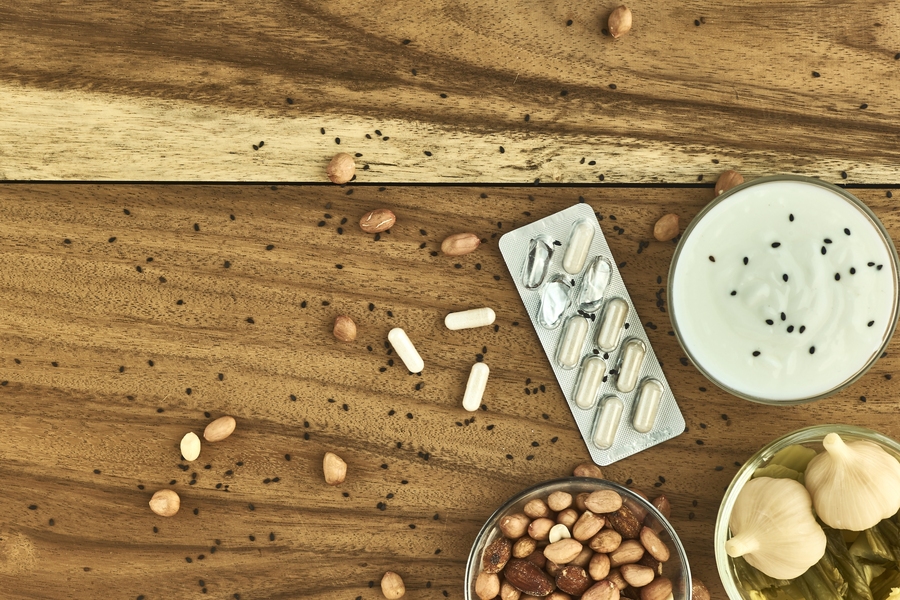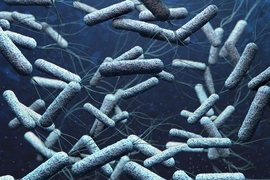Researchers are only beginning to understand how the gut microbiome — the vital community of microorganisms that lives in our intestines — interacts with our bodies and the food we eat. For doctors and scientists, the challenge lies in predicting whether changes to gut microbes are associated with either disease, diet, or both — a complex problem due to the ever-shifting nature of gut bacteria, food consumption, and the ways in which the two interact.
Students at the Center for Microbiome Informatics and Therapeutics (CMIT) and the Health Sciences and Technology program, two MIT-based initiatives, sought to discover how to stabilize the gut microbiome and separate the effects of diet and disease, thus allowing for deeper investigation into the link between the gut and human health. The study was recently published in Scientific Reports and led by Thomas Gurry, a research scientist at CMIT who received his PhD in computational and systems biology from MIT in 2015.
“A number of studies show the association between the compositions of gut microbiomes and diet, but the precise relationships between individual nutrients and their effect on composition are hard to pinpoint,” Gurry says. “We wanted to go to a higher level of resolution than studies in the past.”
Fixed diets are difficult to design and implement, especially across a group of people. Enforcing a particular eating pattern is crucial, because the absence of a single ingredient would alter the composition of that particular meal and affect the resulting stool sample, rendering results unusable.
Liquid meal replacements in the form of bottled shakes are commonly served in hospitals nationwide. They are often given as a nutritional supplement — and occasionally as the exclusive source of nutrition — to patients ranging from the elderly to those being treated for eating disorders. With this in mind, the researchers chose to use the commercially available liquid meal replacement shake Ensure as the sole food source for their subjects’ fixed diet. The advantage of a liquid shake over a preportioned meal, the researchers reasoned, is that individuals cannot intentionally or accidentally leave out any part of a meal.
In the study, healthy adult participants drank only Ensure for six days. Participants could have as much of the meal replacement shake as they wanted but no other food or drink besides water. After the third day, subjects were given a large quantity of one of a sample of nutrients, referred to as spike-ins, to see what effects this single nutrient (such as the fiber pectin) had on the microbiome and whether its influence was reproducible across subjects.
To the researchers’ surprise, day-to-day variability of the gut microbiome did not go down. Although Gurry was reluctant to say why, he was able to conclude that the standardized Ensure diet does not have the effect of creating a constant background in the gut. What was detected over the course of the study was a high degree of diet-induced stress in individual participants’ microbiota, which Gurry says could be attributed to the large amounts of processed sugar in the Ensure product.
“Moving forward, hopefully more consideration will be given to the effect of these nutritional meal replacements on the microbiome in a clinical context, as some patients being treated for Crohn’s disease, for example, are asked to eat only Ensure.”
The team was equally surprised to find that the effects of the majority of nutrients, excluding the fibers inulin and pectin, despite being administered in high doses, produced little effect on microbiome composition and no reproducible impact across subjects. “These results suggest that the major drivers of microbiome composition are dietary fibers,” Gurry says.
Ultimately, according to Gurry, more needs to be documented at the strain or subspecies level of the gut. “We now know that a standardized diet is not an effective way to clean up a signal in a study measuring associations between microbiome composition and disease, nor does it reduce day-to-day variability,” he says.
“However, we do find that different individuals have different responses to the same specific nutrient, likely due to the different strains they harbor. This offers an opportunity for precision medicine.”










